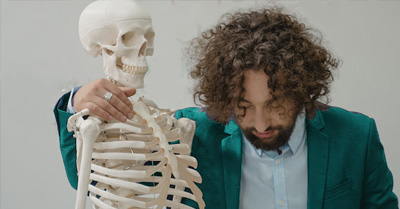Intermediate Reading Course. Section 1: The Basics
Anatomy of a Paragraph—How a Paragraph Is Written and Read
Course Navigation
Note. Complete this as a standalone lesson or visit “course navigation” for the complete course.
From Writing to Reading
To understand what you read, it is important to know how writers put their ideas in writing. By understanding how the written text works, you will know what to look for when you read it.

Tima Miroshnichenko | Pexels
You can take an entire course on the writing process. As this is a reading course, we will stick to the basics only.
The writing process in a nutshell
To write anything, first, you need a topic and an idea about the topic. The topic can be anything; you can write about a person, a subject you like, an event or story, your favorite recipe, etcetera.
Unless you are writing a whole book, you should choose something specific. You need to have enough to say about your topic but, if it is too broad, it can become unmanageable.
Then you organize your ideas. Typically, you group your ideas into chunks that you can help explain, describe, illustrate, and so on. These are your paragraphs.
Let’s Write about Professor Ecks
Let’s say your topic is your favorite instructor, Professor Ecks, and that you have two very specific ideas: (1) Professor Ecks is very demanding and (2) Professor Ecks is an excellent instructor.
You can generate ideas to describe Professor Ecks as a demanding but excellent instructor.
The plan (or outline)
Demanding instructor
- assigns homework every week
- gives a quiz every week
- accepts no late work
Excellent instructor
- explains everything very well
- keeps you engaged in discussions
- takes a genuine interest in students
- makes time for students
- helps students individually if needed
You Have Your Paragraph
That’s it. You have your paragraph. All you have to do now is write it so that your ideas about Professor Ecks are clear to your readers.
A paragraph about Professor Ecks
1Professor Ecks is a very demanding instructor.
2He assigns homework every week.
3You will also take a quiz weekly.
4You’d better turn in your assignments on time because he accepts no late work.
5You will learn a lot because he explains everything very well and keeps you engaged in interesting discussions every class.
6He also has a genuine interest in his students.
7He always makes time for you and, if needed, he will help you individually.
This paragraph covers both ideas you planned to write about your topic, Professor Ecks.
Sentences 1–4: He’s a demanding instructor. (Hover over this portion of the paragraph to highlight the sentences.)
Sentences 5–7: He’s an excellent instructor. (Hover over this portion of the paragraph to highlight the sentences.)
What You Do As the Reader
If someone else wrote the above paragraph and you were reading it for the first time, now you know what you need to do.
- What or who is the paragraph about? The answer to that is the topic of the paragraph.
- What does the writer want me to know about the topic? As you read, pay attention to the details. They tell you what the writer has to say about the topic.
Keeping this in mind as you read each sentence, you start noticing patterns of information.
First, it sounds as though writer is complaining Professor Ecks is very demanding. But then you realize the writer actually appreciates Professor Ecks because he is also an excellent instructor.

Leah Kelley | Pexels
The main information you need to know is that Professor Ecks is demanding but excellent. Everything else supports this claim.
Assess Your Learning
Practice 1. Identifying general and specific Ideas
Practice 2. Recognizing general and specific statements.
Up Next: Main Ideas and Supporting Details
Go to the next lesson to learn about main ideas and supporting details as patterns of information.